Non - Xeriscape.
Common Landscape Plants. Shrubs, Flowers, & Trees.
For The Arizona Desert Environment
Pictures, Photos, Images,
Descriptions, & Reviews.
Olive Trees, Olea europaea.
We Are Proud Of Our SafeSurf Rating!
 |
| The Olive Tree, Olea europaea. |
|---|
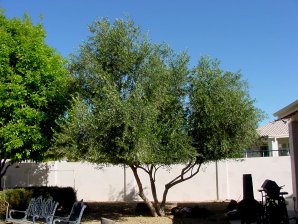 |  |
| In Many A Back Yard Lurks The Olive Tree! | Olive Tree, Olea europaea The Cause Of Many Allergies! |
|---|---|
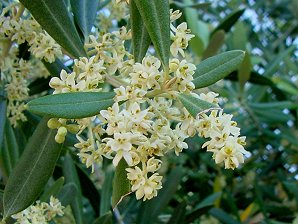 | 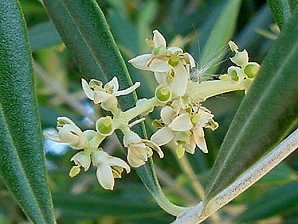 |
| These Pretty Little Flowers. Start Blooming About The First Of April. When Most Peoples Allergies Start! | Many Local Cities Now Have Laws Against Planting Flowering Olives In Arizona. |
 | 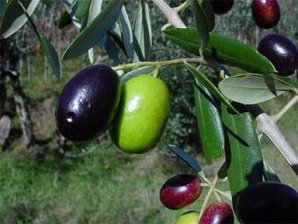 |
| These Unripe Olives. | Start To Ripen. |
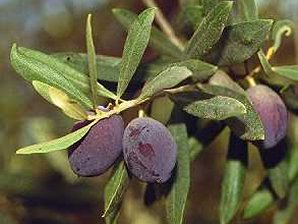 |  |
| Turning Into Ripe Olives. | Or These Ripe Olives. |
 /
/

Olive Trees.
We wish to thank Wikipedia, the free encyclopedia for some of the information on this page. We share images and information with Wikipedia. A single or multistemmed tree or large evergreen shrub. The olive tree is the oldest known cultivated tree in history. Olives were first cultivated in Africa, and then spread to Morocco, Algiers, and Tunisia by the Phoenicians. Olea europaea was first cultivated in Crete and Syria over 5000 years ago. Around 600 BC olive tree cultivation spread to Greece, and Italy. The olive tree is an evergreen tree with gray-green leaves, and small white fragrant flowers in the spring which produce a lot of pollen. A young olive tree has smooth gray bark, but as it gets older it gets very gnarled. A mature tree can reach a height of 25 to 30 feet, and live for hundreds of years. Some have even lived to be a thousand years. Wind is considered the primary agent in the transfer of olive pollen. Honey bees occasionally visit the trees for pollen. Cities in Arizona, such as Tucson; now have laws against the planting of olive trees that produce flowers. This is because, olive pollen can start allergies. The olive tree, Olea europaea, is very hardy: drought-, disease- and fire-resistant, it can live to a great age. Its root system is robust and capable of regenerating the tree even if the above-ground structure is destroyed. The older an olive tree is, the broader and more gnarled its trunk appears. Many olive trees in the groves around the Mediterranean are said to be hundreds of years old, while an age of 2,000 years is claimed for a number of individual trees; in some cases, this has been scientifically verified. For example, an olive tree in Algarve, Portugal, is 2,000 years old, according to radiocarbon dating
Quick Notes:
Height: 20 - 49 feet with equal or slightly less spread.
Flowers: Axillary clusters of small creamy white flowers; bloom in spring; allergenic. They have four valvate corolla lobes, a short four-toothed calyx, and two stamens that produce pollen copiously and little, if any, nectar.
Flowering Time: Southern Arizona, March - April. Phoenix Area, April - May.
Leaves: The leaves are oval 1- to 3-inch gray-green leaves attached to gray branches.
Trunk: Average size up to 3 feet in diameter. Some very old trees are larger.
Soil pH requirements:
Sun Exposure:
Elevation: Can be found from 0 - 4,900 Feet. Some sub - species have been discovered at over 8,000 feet.
Habitat: Orchards and landscaping. Lower elevations where water is available. The plant prefers light (sandy), medium (loamy) and heavy (clay) soils, requires well-drained soil and can grow in nutritionally poor soil.The plant prefers acid, neutral and basic (alkaline) soils.
Miscellaneous: Maintenance: high; allergenic pollen, flower drop, messy staining fruit drop, pruning of basal suckers is required. To stop flowering the trees can be sprayed. The olive spray season is in the months of February and March.. Flowering Photos Taken; April 6, 2003. In Glendale, Arizona. Some people say this plant is good for xeriscape. We say no!
|
We Are Proud Of Our SafeSurf Rating!
We Are Proud Of Our SafeSurf Rating!



We Are Proud Of Our SafeSurf Rating!
We Are Proud Of Our SafeSurf Rating!
Here Are Some Links To The Very Best & Most Popular Items Sold On Amazon.Com
To Learn More! Click The Links Below. No Obligation, Of Course!
| © 1966 - Present, Audrey, Eve, & George DeLange |


